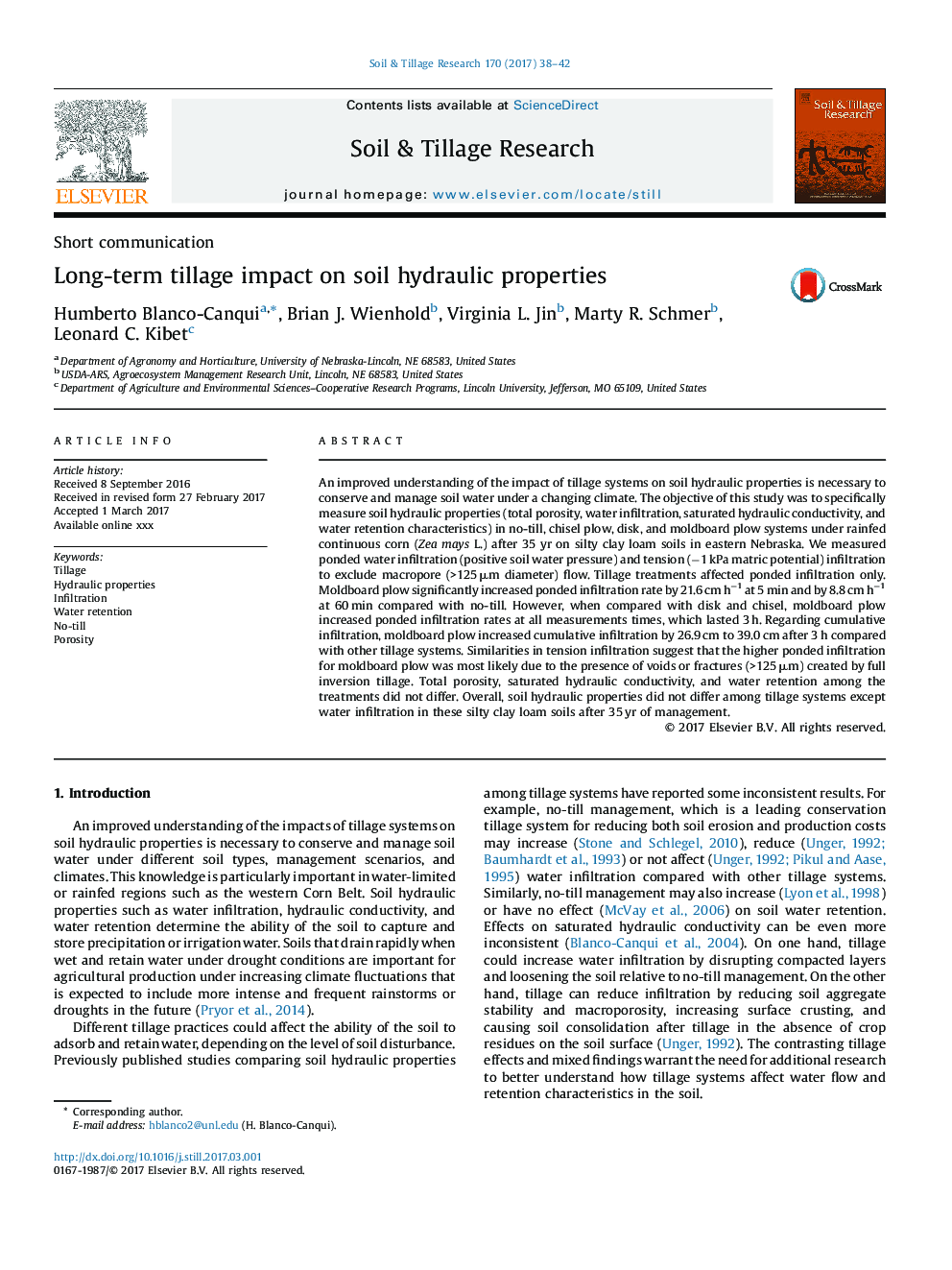| Article ID | Journal | Published Year | Pages | File Type |
|---|---|---|---|---|
| 4927513 | Soil and Tillage Research | 2017 | 5 Pages |
Abstract
An improved understanding of the impact of tillage systems on soil hydraulic properties is necessary to conserve and manage soil water under a changing climate. The objective of this study was to specifically measure soil hydraulic properties (total porosity, water infiltration, saturated hydraulic conductivity, and water retention characteristics) in no-till, chisel plow, disk, and moldboard plow systems under rainfed continuous corn (Zea mays L.) after 35 yr on silty clay loam soils in eastern Nebraska. We measured ponded water infiltration (positive soil water pressure) and tension (â1 kPa matric potential) infiltration to exclude macropore (>125 μm diameter) flow. Tillage treatments affected ponded infiltration only. Moldboard plow significantly increased ponded infiltration rate by 21.6 cm hâ1 at 5 min and by 8.8 cm hâ1 at 60 min compared with no-till. However, when compared with disk and chisel, moldboard plow increased ponded infiltration rates at all measurements times, which lasted 3 h. Regarding cumulative infiltration, moldboard plow increased cumulative infiltration by 26.9 cm to 39.0 cm after 3 h compared with other tillage systems. Similarities in tension infiltration suggest that the higher ponded infiltration for moldboard plow was most likely due to the presence of voids or fractures (>125 μm) created by full inversion tillage. Total porosity, saturated hydraulic conductivity, and water retention among the treatments did not differ. Overall, soil hydraulic properties did not differ among tillage systems except water infiltration in these silty clay loam soils after 35 yr of management.
Related Topics
Physical Sciences and Engineering
Energy
Renewable Energy, Sustainability and the Environment
Authors
Humberto Blanco-Canqui, Brian J. Wienhold, Virginia L. Jin, Marty R. Schmer, Leonard C. Kibet,
